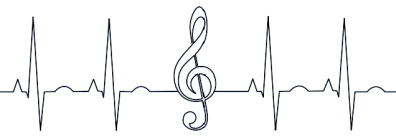I hang up the phone from another unproductive phone call. All of these calls, blending together, have started to sound very similar to the monotone answering machine messages gifted to us by businesses and bureaucracies alike.
“…I’m sorry, we have no availability. We can put you at the end of our (very, very long) waiting list or you can call back in a month and check again- although we no longer take your insurance…”
Does anyone else find it ironic how difficult it can feel to just find a therapist? I mean, I always thought that reaching out to a therapist when you needed one was the challenge.
Okay, so I can call back in a month. Yet, sometimes it takes me an additional month to pluck up the courage or latch onto enough motivation to make such calls.
Arguably, mental health has become less of a taboo subject over the past few years. If anything, it has definitely bled into the public consciousness more than before. From the resurgence of celebrity mental health accounts to an increase of mental health education and service programs (*ahem* does the SMTD Wellness Initiative ring a bell?), resources are out there and plentiful.
However, asking for help can be a bigger struggle than looking up resources (as we saw above). Not to mention, said resources aren’t always cut and dry.
For the performing artist, our experiences with mental health conditions can be very different to someone outside of the performing arts world. Our hobby is our career, our passion, our life… That is pretty unique, so it is unsurprisingly distinct in terms of wellness too. Every day as artists, we unavoidably experience things like criticism, perfectionism, performance anxiety …. head on. Performing arts is a tiring marathon, regardless of how rewarding it can be. It does not matter how great you are at pacing yourself- it. is. hard. Creditably, it is.
Moreover, it is extremely personal.
So, where does this leave us?
As I see it, I think it means we talk a lot more. Mental health might be less taboo, but that doesn’t mean there is no more destigmatizing to be done. After many of us were remote for most of the pandemic, the best I can equate it to is turning both your camera and microphone on in a Zoom call. Sure, when you are sitting there with everything off, you can still be productive (and comforted by the fact that no one is looking at you), but you can arguably make a bigger impact when you put yourself out there. The same goes for mental health. Choosing to talk about the elephants in the room (since the pandemic began, there always seems to be a whole herd of them taking up space) allows us to work preventatively by guiding those poor elephants away from the hole before they fall in. Plus, it permits the provision of comfort through community- to negate isolation when the going gets tough and to encourage people to unashamedly take up space.
Bringing us to the point of all of this verbiage- the reason for this blog. There are way too many performing artists who struggle with mental health to not talk about it considerably more in the performing arts world. I know that online and print resources can sometimes start to feel bland, or too formal, or it feels like you haven’t found exactly the help you want yet on your search.
We need to put the human back into a lot of resources. Provide more stories and interviews from other artists and students that you can read and relate to. Create more spaces for you to reflect on and share your own experiences.
Many of us join the performing arts for the community it envelopes us with. Thus, it seems sensible that we as performing artists can feel more well from a sense of community and an opportunity for nonjudgmental conversation.
So, here is to performing well– mentally and physically.
